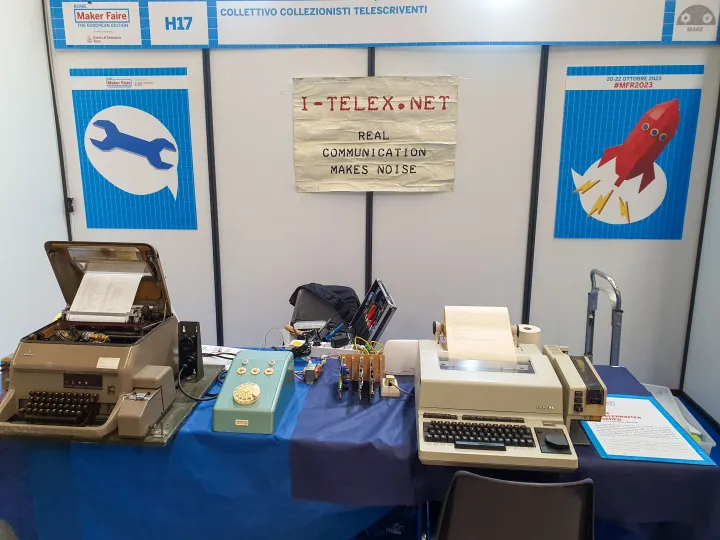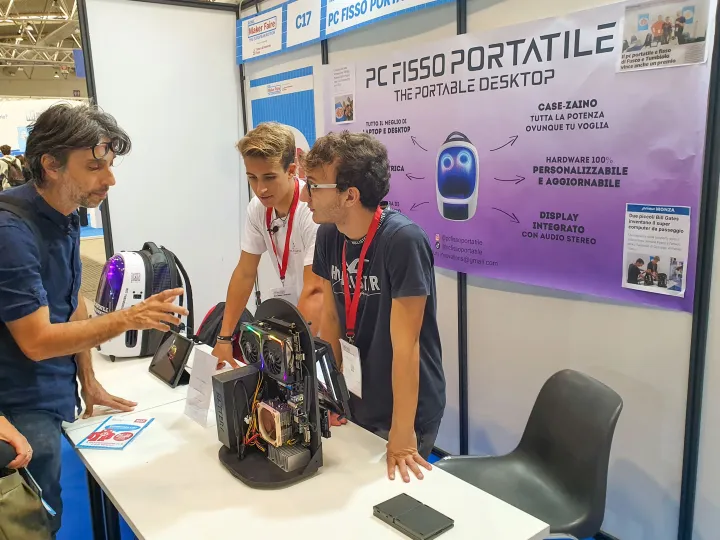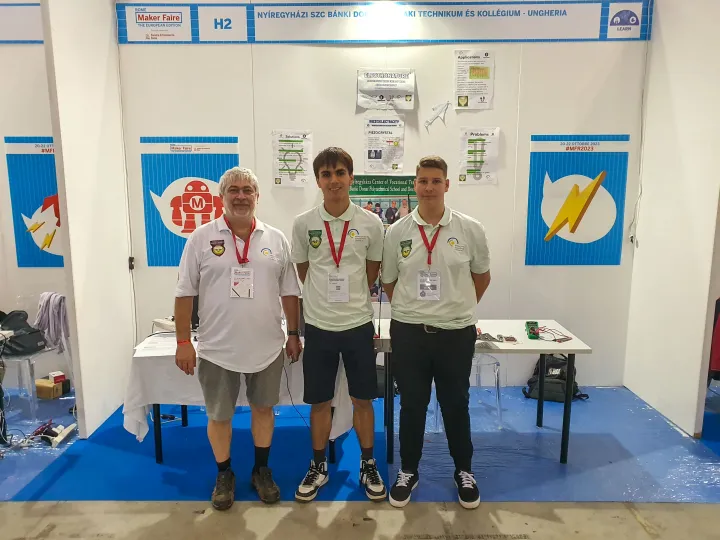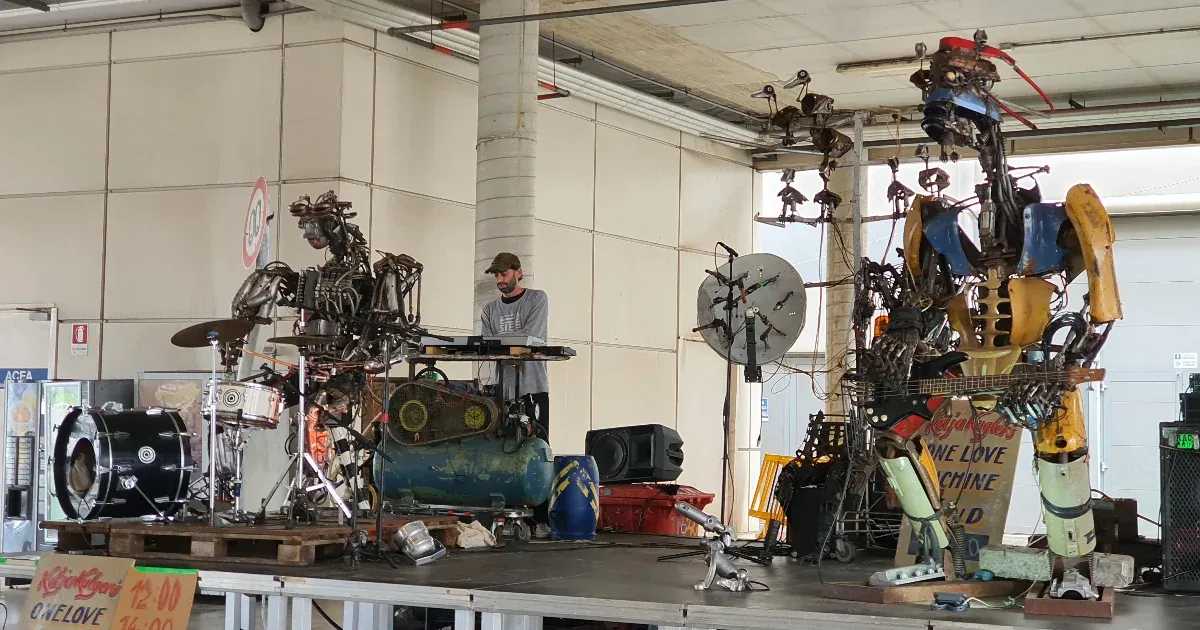When it comes to major technological innovations, there is always a lot of anticipation at the beginning, and science fiction visions emerge about how one particular thing will transform the entire society. Then comes the disappointment, when it turns out that things are not going quite as we imagined, and we will not be playing with flying cars in the foreseeable future, as the Jetsons cartoon predicted, let alone in 2001, and we will not be sending them in twenty or thirty years to Jupiter as Space Odyssey envisioned. After disappointment comes the third stage, when most expectations are fulfilled, even if not exactly as they were imagined, and soon become such a part of everyday life that they go unnoticed. At the Maker Faire held in Rome from October 20 to 22, there were countless things that would have been absolutely unimaginable ten or twenty years ago, but today many people have already experienced and bored them. The great social change that many predicted in terms of technological development, which would lead to the democratization of access to innovation and free creativity, has become a reality in the maker movement.
The first such event was held in California in 2006, this is already the eleventh in Rome (two years were lost during Covid), and the largest of its kind in Europe. Founder Dale Dougherty felt that technology made it possible to create a new culture: electronics, robotics and 3D printing became accessible to everyone, and the Internet provided an opportunity for those interested in all of this to share their knowledge with each other. But of course it is better that they meet in person from time to time. Maker Faire is an event that is both very serious and very trivial at the same time, where completely illogical and therefore completely ridiculous ideas fit in with more serious innovations.
It is perhaps no coincidence that this position found the most fertile soil in Europe in Italy. Small family businesses still play a prominent role in the Italian economy. There are the automobile company Iveco and the military company Leonardo, but 80 percent of employees work in small and medium-sized enterprises. They are not far behind in the way of innovation in sequins and adhesive tapes. It is no coincidence that one of the most important tools of the entire manufacturing movement, the Arduino microcontroller, was also born in Italy. The Rome Fair was created with the active support of the Italian government, its main organizer is the Chamber of Commerce of the Province of Lazio, and exhibitors include a variety of government organizations, from the Navy to the Gendarmerie to the tax authorities.
Photo: Gergely Nadori/Telex
A computer built into the backpack and an edible item
Perhaps because of its size, the Maker Faire in Rome is much closer to a traditional fair on the scale of BNV-Ozora than to a party of clownish inventors, but there were still a fair number of people who came up with nice-looking ideas that didn’t promise much commercial benefit. This was, for example, – obviously it has an additional connection for us – Old telex machine, which was connected to the Internet, and thus messages were sent to the specified email address. The giant robot squad, for example, has similarly little practical use, but there’s no denying that it looks great and has always played a full role. Likewise, he’s more cheeky than helpful Desktop computer built into the backpackSince the laptop was invented a long time ago, the performance of today’s computers is not necessarily inferior to that of desktop computers. But when we know that this is the work of two nineteen-year-olds, who worked only with recycled materials, one actually looks at it differently.


Photo: Gergely Nadori/Telex
There were also projects that at first glance you might classify as past projects, but once you get to know them better, they turn out to make a lot of sense. This is the case, for example Edible rechargeable batteryWhich uses only food raw materials. Its medical applications could be of particular interest as an energy source that can be used within the body without danger. In the same way, the Sardinian triple whistle seems like a good idea at first Electronic versionwhich even detects the force of the blow, but when we discover that each note of this instrument is required separately (as is the case with the harmonica), while the electronic note can be reset with a single click, it actually makes more sense.
There are also projects that immediately show how they can be used, such as one in which students at a design university worked to create cheap, good-looking devices for physics experiments, which anyone can make from simple materials, using only their appearance. Students also want to work with them. It is undoubtedly useful Electric wheelchairwhich can be controlled by head movements, or are Grill cafe, which heats the roasting drum using motorized mirrors and sunlight. It seems that more than one invention has already become a product, e.g 3D scanner, which creates a sewing pattern for a custom shirt in seconds. Even a fashion designer who uses a 3D printer has a successful brand Make Patterns for your clothes.

Team of Banki Donat Technical High School in Nyérigyháza – Photo: Gergely Nádori / Telex
In many respects, whoever exhibits at such an event is more exciting than the projects on display themselves. Of course, the big guns of the maker movement are here, the Raspberry Pi microcomputer, the Arduino microcontroller or the Prusa 3D printer manufacturer, which also started as a maker project and has now grown to 800 employees. But one of the six halls was filled with objects made by high school students. Among them was the only Hungarian exhibitor at the fair, from Nyirigyháza Donut Banke Technical High School TeamThey came up with an idea inspired by grass leaves swaying in the wind. It is believed that this principle can be used to produce electricity in a new way, using piezoelectric energy, especially at low cost. The workshop led by Zsolt Zsigó has been here every time since 2017 with some project or innovation.
This would not be surprising in Italian public education, as it is quite common for technical schools to have teams of 4-10 people led by one or two teachers working for up to half a year on an idea, and the end result can be Drone for water sampling Or just Electric card. There were those who came up with only very simple things: a robot that followed lines, hydraulics made of cardboard, but their enthusiasm, when they talked about their own project, was exactly the same as those who came up with the idea of shaking the wall. There was nothing to be ashamed of if someone copied an earlier idea, or perhaps modified it a little, because the spirit that prevailed in this room was that the goal was to create, to do something.

Photo: Gergely Nadori/Telex
When the game gets serious
In the next hall were college and university student projects, which are usually more extensive and serious, and often associated with some kind of research or industrial innovation. In the end, Arduino also started as a thesis, and then became what it became.
There was a separate hall for agricultural and health projects, containing everything from automated harvesting robots to a 3D printer for making cakes. In addition to universities, countless associations and companies offered their ideas, from radio amateurs to railway model makers. In many ways, the most exciting were the teams of a few people, groups of friends who started a project out of enthusiasm, and then, if it turned into a business, they didn’t mind it either. For example, 3D printing technology appeared five years ago, where the object to be manufactured is drawn with a gelatinous material. Here, a company of three made one of these Like this versionThrough which a traditional 3D printer can be converted into a printer.
As with almost everyone, they also publish with open source and Creative Commons licenses, as that is the norm in the factory community, even if they are produced with the hope of commercial exploitation. It seems that something utopian has already been achieved in this subculture: technology helps creativity and even creates society.
(We participated in the exhibition at the invitation of the Chamber of Commerce of the Province of Lazio.)












































